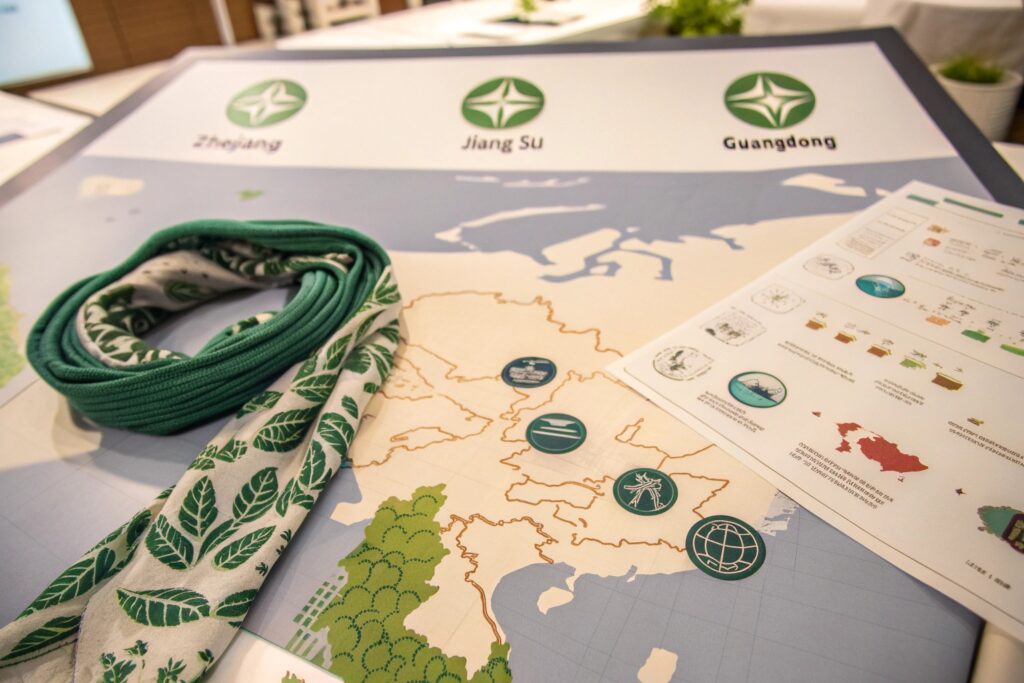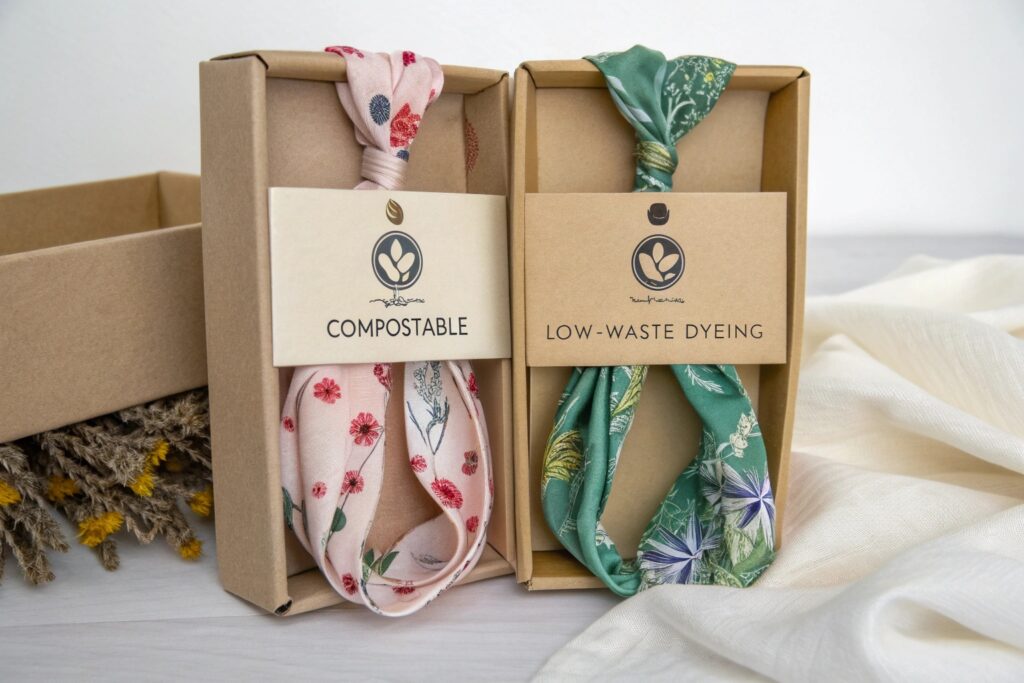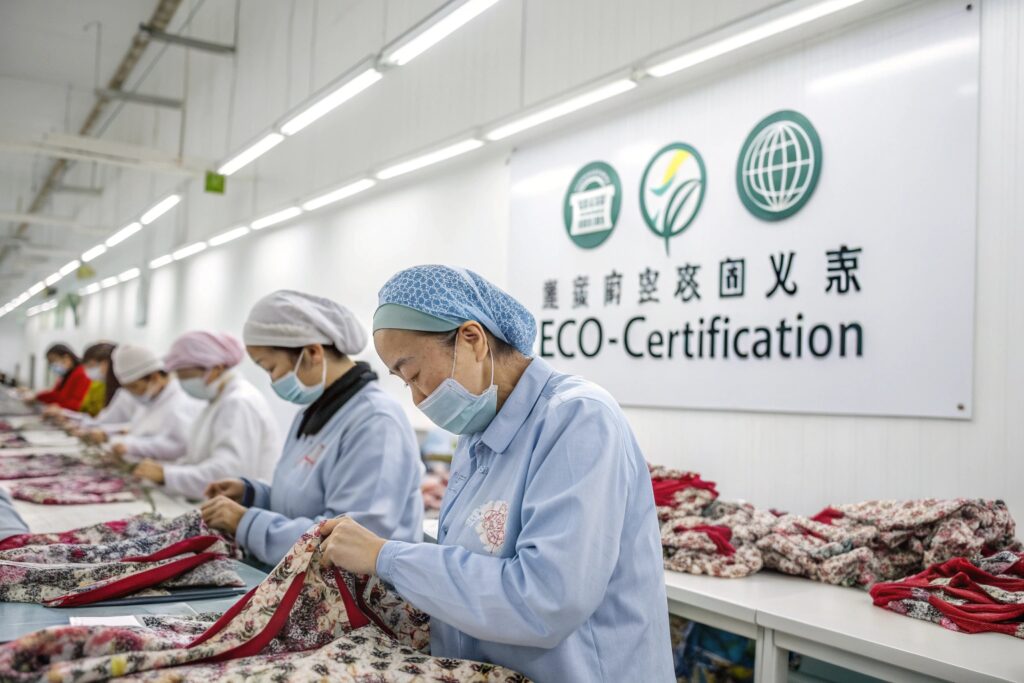Demand for sustainable fashion accessories has exploded in recent years, especially in Europe and North America. As buyers become more environmentally conscious, sourcing eco-certified silk scarf headbands is no longer just a “nice-to-have”—it’s a necessity. For e-commerce sellers, boutique brands, and wholesalers, finding the right manufacturer that meets ethical and sustainability standards is critical to building a trusted brand.
To source sustainable silk scarf headbands, buyers should look for factories with certifications such as GOTS, OEKO-TEX, and ISO 14001, along with proven experience in eco-material handling and low-impact dyeing. China offers many qualified options if you know where to look.
I’ve spent years working with clients who need both style and sustainability. In this post, I’ll share the key sourcing tips and how factories like ours ensure your headbands align with eco-conscious brand values.
What Certifications Should You Look for in a Sustainable Factory?
Many buyers say “sustainable,” but few know how to measure it. Sustainability isn’t just about fabric—it’s about the entire supply chain. If your factory doesn’t follow eco standards, your product claims won’t hold up under scrutiny.
Factories with GOTS, OEKO-TEX, and ISO 14001 certifications ensure their silk production meets global environmental and social responsibility standards.

What Does GOTS Certification Mean for Silk Headbands?
The Global Organic Textile Standard (GOTS) covers the full production process, from raw silk to dyeing and finishing. For headband buyers, this ensures the fabric is organic and processed without harmful chemicals. Many European retailers now require this as a baseline.
What Is OEKO-TEX and How Does It Protect Consumers?
OEKO-TEX Standard 100 certifies that every component of the textile—thread, label, dye—is tested for harmful substances. If your headbands touch skin or hair, this matters. Buyers looking for “baby-safe” or “skin-safe” accessories should insist on this certification.
Where Are the Best Silk Headband Factories Located?
While countries like India or Italy have rich silk traditions, China still dominates in both volume and technical capacity. The key is choosing which region and which supplier. Not every silk factory is equal.
Zhejiang, Jiangsu, and Guangdong provinces house some of the most advanced, eco-certified factories producing sustainable silk scarf headbands.

Why Is Zhejiang a Hub for Eco Silk Production?
Zhejiang’s textile zones around Keqiao and Hangzhou specialize in digital printing and silk weaving. Our factory partners there use water-saving dyeing technology and solar-powered finishing. If you need custom prints on silk headbands with low-impact dyes, this is where you should look.
What Makes Jiangsu and Guangdong Ideal for Export?
Factories in Jiangsu (like Suzhou) offer tight quality control and often hold both OEKO-TEX and ISO certifications. Meanwhile, Guangdong factories are known for speedy delivery and multilingual export teams, which help ease international compliance concerns for headwear buyers.
What Makes Silk Scarf Headbands Eco-Friendly Beyond Fabric?
It’s not enough to use organic silk. The sustainability of a scarf headband also comes from how it's printed, packed, and shipped. Retailers and buyers want full accountability now—from raw materials to last-mile logistics.
Truly eco-friendly silk headbands use low-impact dyes, biodegradable packaging, and are made in ethical, low-waste facilities.

How Can Packaging Influence the Eco Score?
We’ve helped clients use recycled kraft boxes and plant-based wrap for shipping. Instead of plastic hangers, we offer FSC-certified paper cards. These reduce the product’s carbon footprint and look premium.
What About Energy and Water Use?
Many of our partner factories use digital silk printing which cuts down on water waste. Also, factories using solar panels or waste heat recovery systems lower energy consumption by 20–40%. Buyers can request a sustainability report during sourcing discussions.
How Can Small Buyers Ensure Compliance When Ordering in Bulk?
Small brands and Amazon sellers often feel they lack leverage when asking for certifications or sustainability audits. But smart factories will always support your compliance needs—especially if you’re scaling up.
Even small e-commerce buyers can request GOTS, OEKO-TEX, and material traceability when working with responsible silk accessory factories.

What Documentation Should You Ask From Your Factory?
Ask for digital copies of certification (not just logos). Also request material data sheets (MSDS) for silk fabrics, dye process records, and eco-packaging specs. Reputable factories already prepare these for global retailers and welcome your due diligence.
Can Low MOQs Still Qualify for Eco-Certified Production?
Yes. At HairAcc, we support MOQs as low as 300–500 units with eco-material options. We provide full documentation to ensure your e-commerce listings meet sustainability platform standards like Etsy’s eco-policy. We also label outer cartons to reflect recyclability, which helps Amazon FBA sellers promote eco efforts.
Conclusion
Sourcing sustainable silk scarf headbands doesn't have to be complicated. With the right partners in China—especially in certified factories across Zhejiang and Jiangsu—you can launch eco-friendly lines that resonate with today’s ethical buyers. At HairAcc, we support your commitment with real certifications, low-MOQ support, sustainable dyeing, and plastic-free packaging options. Whether you're an indie brand or a major distributor, our team ensures your headbands reflect quality and integrity from start to finish.









